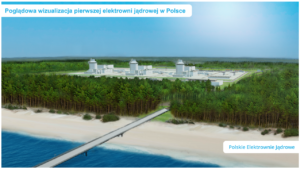Germany wants to build its own LNG terminal. Very good. They take an example from Poles – writes Wojciech Jakóbik, editor-in-chief of BiznesAlert.pl.
LNG terminal in Germany
The German government has confirmed that it intends to provide financial support for the construction of the first LNG terminal in Germany. It would be ready by 2022. The leading project is German LNG Terminal carried out by a joint venture of the same name, gathering N.V. Nederlandse Gasunie, Oiltanking GmbH and Royal Vopak N.V. The import of liquefied gas and the development of accompanying services will give Germany access to the global LNG market and a range of services: bunkering, refueling, rail and road deliveries. The capacity of the facility is to be 4-5 billion cubic meters annually. It is to consist of one tank and a berth. It will be possible to moor vessels with a capacity of up to 210,000 billion cubic meters. Its profitability is to be guaranteed by the booking of capacity by the German RWE made on September 6th after a positive response of the market in the course of the open season. Its volume has not been disclosed. An additional support for profitability is to be a bunker of ships moored at the nearby port of Hamburg. The final investment decision is to be made at the end of 2019.
Threat to Poland?
The investment has an economic value, because it will allow Germany to use the potential of LNG as well as political, because it will give new sources of gas supply and improve the image of this country. In both dimensions it is harmed by the disputed Nord Stream 2 pipeline, for which Germany is arguing with Poland and the United States. Is this a problem for Poland? In fact, another terminal in Europe may be a potential competition for the facility in Poland. Polish LNG terminal has capacity of 5 billion cubic meters. However, it is at the next stage of development. It has two tanks, which increases its flexibility and potential. It has to have another wharf and functionalities that will probably arise faster than at Brunsbuttel. In addition, the German facility will have to compete first with the competition from Benelux – Gate LNG in the Netherlands and Zeebrugge LNG in Belgium. It is for this reason that the German government announces support for this undertaking. It is difficult to implement it on a well-supplied market full of gasports, which are not fully used.
Lesson from Świnoujście
Thus, it can be seen that the Germans are drawing a lesson that the Poles have already done. It is impossible to build new gas infrastructure in pure market conditions, which cry out about the market’s capacity in terms of LNG capacity. The government must therefore intervene and introduce a support mechanism whose assumptions remain unknown for the time being. Poland has upgraded the terminal by reserving the entire capacity through the state-owned PGNiG. Socialization of costs in the tariff did not survive negotiations with the European Commission. An agreement with RWE may be another solution which, following the example of Poles, Germany will apply to achieve the economic and political goal. For this reason, we should be happy with the decisions of our neighbors, who sadden us to cover the problematic Nord Stream 2 with a political umbrella.
Nord Stream 2
Incidentally, the Nord Stream 2 gas pipeline will undermine the profitability of Brunsbuttel LNG analogically to the damage caused to each new infrastructure in its vicinity: the gas terminal in Świnoujście or the Baltic Pipe gas pipeline. The more Russian gas will be on the German market, the more difficult it will be to compete with it alternatives, ie the gas terminal near Hamburg also. This is another argument for focusing on projects that give real diversification and abandon those that threaten it.








